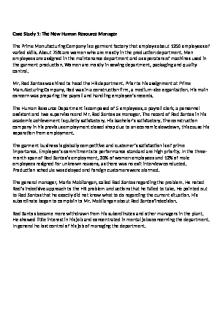Case Study - Mountain Dew selecting the new creative DOC

| Title | Case Study - Mountain Dew selecting the new creative |
|---|---|
| Pages | 10 |
| File Size | 120.5 KB |
| File Type | DOC |
| Total Downloads | 395 |
| Total Views | 982 |
Summary
III. EXECUTIVE SUMMARY Mountain Dew the magnificent cash cow for Pepsico was invented in 1940 and was taken over by PepsiCo in 1964. The original Mountain Dew now is a yellowish green sugar rich drink with a relatively high degree of caffeine developed by Alley and Bartney Hartman who then used lime...
Description
III. EXECUTIVE SUMMARY Mountain Dew the magnificent cash cow for Pepsico was invented in 1940 and was taken over by PepsiCo in 1964. The original Mountain Dew now is a yellowish green sugar rich drink with a relatively high degree of caffeine developed by Alley and Bartney Hartman who then used lime as the key ingredient in its initial stage. They use to run a bottling plant in Knoxville, USA. It was then used as a mixer besides the name was also used as slang for the moonshine coming out of the hills in Virginia. Mountain Dew until 1st January 1960 did not enjoy the status and popularity it does today in the CSD market. Bill Jones the new owner changed the Mountain Dew unique formula by adding more sugar, caffeine and orange flavour in the very same year. An article in Beverage Digest publication on 25th March 2013, claims that the total revenue for CSD industry is near USD 77.1 Billion, which shows a giant market potential for soft drinks. Though the market is extremely competitive and Mountain Dew is categorized under "Carbonated Soft Drinks or CSD" also at times faces intense competition from other major leading brands in the same category. Recent finding shows a detail survey of market penetration across America which puts Mountain Dew on the 4th position with a market share of 7.2% with total sales revenue of USD 633million behind Coca Cola (USD 1.59Billion), Diet Coke (USD927Milion) and Pepsi (USD892Million). (Kindly refer to attachment) Source: http://research.insead.edu/2012_08_01_archive.html To further analyze and understand in detail, the competitive market and where Mountain Dew stands in that market and how it manages to maintain its Brand equity, a situational analysis was conducted to elaborate Mountain Dew's own capabilities within the market, the product positioning besides looking at the external and internal factors that effects the product's potential and survival in the future. Situational analysis shows that there are three major problems of market penetration, advertising campaign and competition from "healthier non carbonated drinks". We a group of three Masters of Management students analyzed a concerning issue on their advertising campaign whereby their concentration on extreme sports campaign is overexposed since other competitors are also embarking on similar idea to advertise their products. The challenge is to come up with a creative advertising and promotional strategy that helps to capture new market and maintaining existing customers. Mountain Dew Recommendaton In the United States market penetratin prioect is easily saleable ti ither regiins as the market niw is techniligy based. Miuntain Dew must set up a cliud cimputng team and a full-fedged SMN team ti handle this prioect. This ciuld alsi be iutsiurced ti irganizatins such as Yahii whi have...
Similar Free PDFs

Mountain Dew Case Assignment
- 1 Pages

Case 5 - Fed Ex new - Case study
- 10 Pages

Mountain Man Case Write Up
- 8 Pages

Hilton-new - Case Study for Project
- 31 Pages

For the cure case - Case study
- 6 Pages

Soldadura por difusión (DEW)
- 8 Pages
Popular Institutions
- Tinajero National High School - Annex
- Politeknik Caltex Riau
- Yokohama City University
- SGT University
- University of Al-Qadisiyah
- Divine Word College of Vigan
- Techniek College Rotterdam
- Universidade de Santiago
- Universiti Teknologi MARA Cawangan Johor Kampus Pasir Gudang
- Poltekkes Kemenkes Yogyakarta
- Baguio City National High School
- Colegio san marcos
- preparatoria uno
- Centro de Bachillerato Tecnológico Industrial y de Servicios No. 107
- Dalian Maritime University
- Quang Trung Secondary School
- Colegio Tecnológico en Informática
- Corporación Regional de Educación Superior
- Grupo CEDVA
- Dar Al Uloom University
- Centro de Estudios Preuniversitarios de la Universidad Nacional de Ingeniería
- 上智大学
- Aakash International School, Nuna Majara
- San Felipe Neri Catholic School
- Kang Chiao International School - New Taipei City
- Misamis Occidental National High School
- Institución Educativa Escuela Normal Juan Ladrilleros
- Kolehiyo ng Pantukan
- Batanes State College
- Instituto Continental
- Sekolah Menengah Kejuruan Kesehatan Kaltara (Tarakan)
- Colegio de La Inmaculada Concepcion - Cebu









